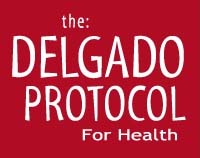Live blood analysis is an incredibly useful technique to detect early signs of anemia, oxidative stress, and nutrient deficiencies. While traditional hematology relies on stained, dead blood samples, live blood analysis uses fresh, living blood observed under a high-powered microscope, offering a real-time look at what’s happening inside the body.
In fact, a full chapter in the Merck Manual—a standard reference for MDs and hematologists—covers the detection of anemia and its impact on oxygen transport and carbon dioxide exchange, which are fundamental to sustaining life.
What Causes Anemia?
Anemia can result from multiple underlying causes, including:
1. Nutrient Deficiencies
One of the most common causes is a deficiency in iron and B vitamins—particularly B12 and folate. We often observe microcytic anemia (small red blood cells) under the microscope when iron is lacking. In cases of B12 or folate deficiency, we see oval-shaped red blood cells, which can signal pernicious anemia or poor methylation.
There are three highly absorbable forms of vitamin B12 that are critical for cognitive function, DNA repair, and nerve health:
- Methylcobalamin
- Hydroxocobalamin
- Adenosylcobalamin
Folate, particularly in its active form—5-methyltetrahydrofolate (5-MTHF)—is essential for proper red blood cell production and methylation pathways.
2. Gut Health and Intrinsic Factor
Absorption of B12 is also dependent on intrinsic factor, a protein produced in the stomach. Alcohol consumption, even a few glasses per week, can impair the body’s ability to absorb B vitamins and deplete liver stores for up to a year.
3. Inflammation from Dairy and Other Foods
Dairy products are highly inflammatory and can lead to microbleeding in the gut, resulting in chronic blood loss and anemia. This is often undetected without advanced blood analysis.
4. Genetic Factors
In regions like Africa, sickle cell anemia evolved as a genetic adaptation to survive malaria. Though these red blood cells are malformed, they offer some protection from parasite infection. Dr. Joel Wallach, BS, ND, suggests that selenium and over 90 trace minerals may help support individuals with sickle cell anemia (Dead Doctors Don’t Lie).
Pernicious Anemia: The Most Dangerous Form
Pernicious anemia is a life-threatening condition stemming from an inability to absorb vitamin B12. It’s often connected to poor diet, lack of intrinsic factor, or autoimmune conditions. Left untreated, it can cause irreversible neurological damage.
How Live Blood Analysis Detects These Issues
For over 46 years, I’ve personally observed tens of thousands of live blood samples. The shapes, sizes, and grouping of red blood cells tell us a great deal about a person’s nutritional status, oxygen delivery, and immune function.
Some key patterns include:
- Microcytic RBCs → Iron deficiency
- Oval-shaped RBCs → B12 or folate deficiency
- Rouleaux (clumping) → Poor circulation and low oxygen delivery, often following a fatty meal
The Impact of Diet on Red Blood Cell Health
Consumption of fatty meats, cheese, and processed oils can cause red blood cells to clump together (rouleaux), restricting oxygen flow to the brain and heart. This can be seen clearly under a microscope within hours after eating.
Dr. Meyer Friedman, author of Type A Behavior and Your Heart, demonstrated that high-fat meals cause circulation to worsen for 6–9 hours post-consumption.
This insight is far more educational than receiving a lab slip that simply states “elevated lipids.”
Why Dry Blood Analysis Also Matters
Dry blood microscopy, at 400x magnification, helps detect oxidative stress by revealing white “holes” in the sample—signs of free radical damage or reactive oxygen toxic species (ROTS). These patterns have been studied for over 60 years by experts trained in the Delgado Protocol.
Observations may suggest:
- Adrenal stress
- Food allergies
- Intestinal inflammation
- Hypercalcemia (often from excess animal protein)
We rank oxidative stress in dry blood as follows:
- <10%: Normal
- 10–20%: Mild damage
- 20–30%: Moderate damage
- >30%: Severe tissue stress
Effective Interventions to Restore Blood Health
To improve red blood cell function and reduce oxidative damage:
- Eat a whole-food, plant-based, oil-free, and sugar-free diet
- Avoid alcohol and diet sodas
- Use therapies like CVAC (Cyclic Variations in Altitude Conditioning) and HBOT (Hyperbaric Oxygen Therapy)
- Supplement with molecular hydrogen (H2) to neutralize free radicals
- Exercise regularly
For targeted nutritional support, consider:
- Absorb B-Complex – Formulated by myself and a team of scientists
- EstroBlock, Testosterone Cream, Adrenal DMG, Liv D-Tox, SlimPlant Pro, Stay Young Chew – Available at DelgadoProtocol.com
Collaborators & Expert Support
- Ken Haversrude and Dr. Ron Duvendack: Pioneers in microscopic blood analysis
- Dr. Anil Bajnath, MD: Advocates for live cell observation as a superior diagnostic tool
Learn More and Get Support
📚 Books:
- Stop Aging Now: Seven Secrets to Look & Feel Great Forever – StopAgingNowBook.com
- Blood Doesn’t Lie by Dr. Nick Delgado – 7PillarsCoaching.com
📞 Schedule a consultation:
Call: 949-720-1554
Email: nickdphd@gmail.com
Watch & Learn
🎥 Educational Videos & Playlists





